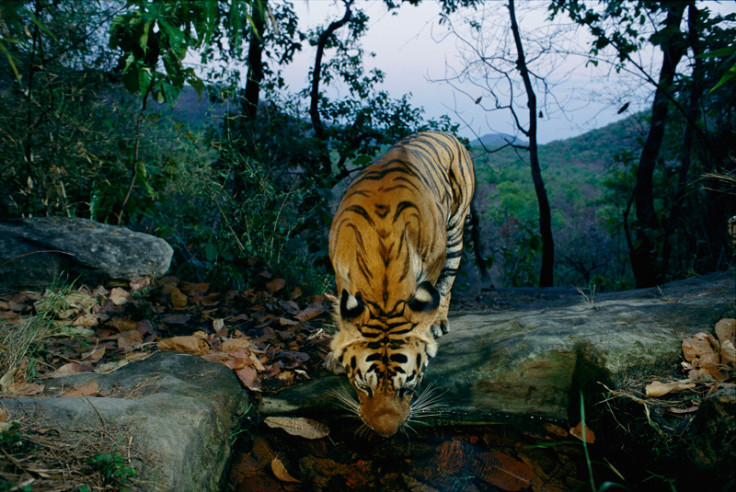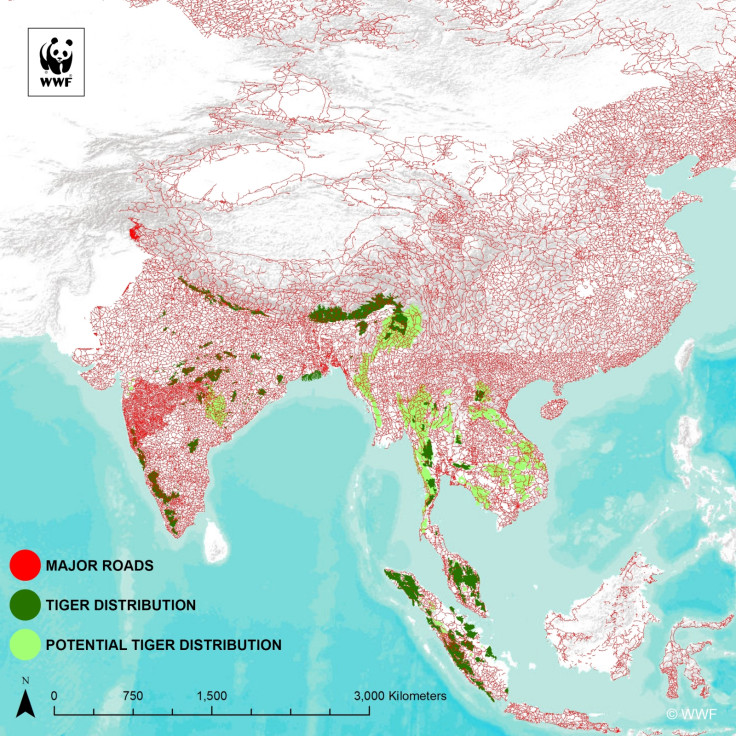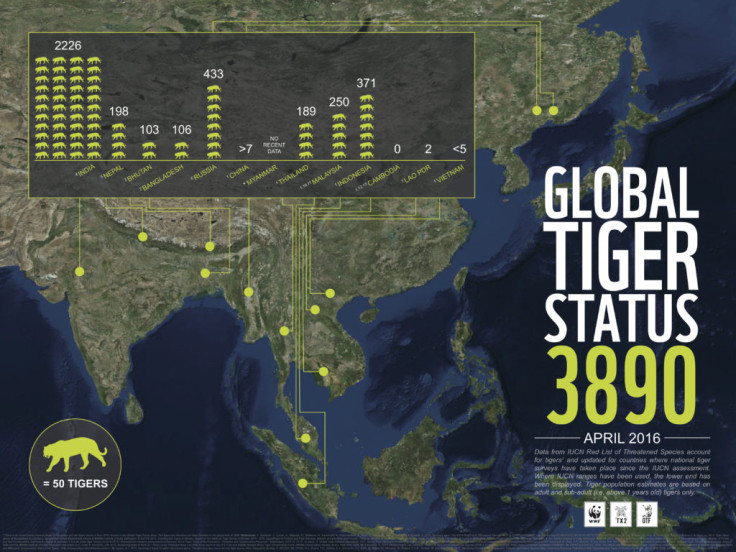World's last wild tigers may be wiped out by bad planning of roads and railways
There are less than 4,000 tigers left in the wild and their habitat is at risk from bad infrastructure planning.

Slowly recovering tiger numbers risk being slammed back down due to a coming infrastructure boom across their habitats in Asia, the WWF says.
In its latest report the conservation organisation calls on Asian governments in countries that fall within tigers' range to make concerted efforts to develop sustainably and to designate no-go-zones where construction is completely off limits.
There are less than 4,000 tigers left in the wild, the report says, and the remaining population is threatened by habitat fragmentation from 11,000 kilometres of roads and railways planned for development in the tiger-range countries. A total of $8 trillion (£6.5trn) is projected for infrastructure projects in Asia up until 2020, the report says.
The report is released halfway through a global effort to double wild tiger numbers between 2010 – when there were an estimated 3,200 wild tigers – and 2022. There are now 3,890 tigers thought to be living in the wild as of April this year.

"The global collaboration to double wild tigers has transformed tiger conservation and given the species a real chance of survival, but the scale of Asia's infrastructure plans could destroy all the recent gains as well as hopes for the future of wild tigers," says Mike Baltzer, leader of WWF's Tiger's Alive Initiative. "Infrastructure is central to Asia's development, but we need to ensure it is sustainable and does not come at the expense of tigers and tiger landscapes."
The report argues for construction to be banned in critical areas for tigers, preserving wildlife corridors between habitable areas, as well as ensuring that the infrastructure projects elsewhere are done sustainably. It also calls for zero-tolerance on poaching and strengthening and enforcing existing laws to halt the illegal trade in wildlife.
Tunnels and flyovers for tigers
There is uneven knowledge about tiger populations in countries across the animals' range, which causes a problem for identifying the most critical areas for tigers, Matthew Struebig of the University of Kent told IBTimes UK.

There are two main ways to adapt roads and railways to make them less harmful to tigers: build underpasses or green bridges for the tigers and other wildlife to cross the lines safely.
Green bridges have worked well for wildlife in Singapore, Struebig says. "Singapore has the finance and the political will to build them. There is a lot of will from the public to protect the environment." However, most tiger-range countries aren't as developed and lack such resources, he says.
Flyovers for tigers such as these come with their problems; they are planted with natural vegetation, and as this grows the bridges become heavier and present new engineering problems. "Underpasses for the tigers are likely to be a cheaper option," says Struebig.

These allow wildlife to pass under roads and have shown some promise in Europe and North America, Struebig says, although there is not a lot of data to confirm how effective they are in many areas.
Craig Bruce, Head of Asia programmes at the Zoological Society of London, says: "A poorly-planned highway or railway line, for example, can literally cut available habitat by half if positioned badly." Working with developers as early as possible in the construction process to combine technology and tiger-friendly engineering can help to mitigate or negate the threats to tigers of development, he says.
Looking at the bigger picture
Bhaskar Vira, director of the University of Cambridge's Conservation Research Institute, says that he expects there to be continued pressure in the region for economic development, although the precise figures predicted in the report are uncertain.
"The question is can that demand for connectivity and transport be accommodated with maintaining the tiger habitat intact. Not all roads necessarily have to disrupt the habitat."
Conservation efforts such as these would gain more political support in a wider context of protecting the local environment, he says. "Some services like protecting the water supply benefit people in the neighbourhood, which would make construction projects more acceptable."

"This is a charismatic keynote species that makes the argument much more focused. But actually the spatial planning question being asked is much wider. These areas are important for providing water and ecological protection beyond just tigers," says Vira. "If you're going to engage in careful planning exercise which looks at pressures and what emerges from these landscapes then this conversation should include more than just tigers, it should be a holistic planning exercise."
Some of the case studies in the report pose a particular challenge for international relations, Vira says. A 630km road being built along the India-Nepal border is now being built, and there are plans for a second highway nearby in Nepal. This trans-border project may bring unprecedented challenges for conservation, he says. "They are both independent sovereign countries. There's no political framework for this to happen."
© Copyright IBTimes 2025. All rights reserved.






















